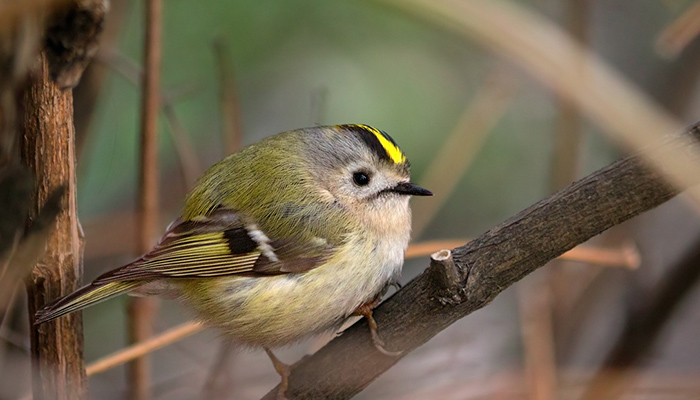
English: Goldcrest, Goldcrested Wren
Russian: Желтоголовый королёк
Mongolian: Шармэлзэн задуулай, Шар мэлзэн танан бялзуухай
German: Wintergoldhahnchen
French: Roitelet huppe
Japanese: キクイタダキ (Kiku-itadaki)
Body length: 8 ½-9 ½ cm. Breeds in coniferous or mixed woods,
preferring dense stands of spruce or firs; on Continent often at higher
elevations. Partly resident, partly migratory. On migration often shows up in
open country. Associates with tits in winter. In woods, keeps high in canopy,
restless moving and hovering among branches. Confiding.
Identification: Attention
to presence of a Goldcrest usually attracted by thin, high-pitched calls.
Minute size (smallest bird in Europe) and combination of being pale green above
and off-white below eliminates all but a few. Short neck and proportionately
large head give compact, rounded impression. Dark ‘peppercorn’ eye looking
large in otherwise pale, bland ‘face’. Crown-stripe yellow, bordered black at
sides. Dark bill very fine.
- Adult ♂: Much orange admixed in yellow
crown-stripe, generally hidden on relaxed bird but shown in display or when
feathers are fluffed up.
- Adult ♀:
Usually no orange on crown, but a few have very little (normally not seen in
the field) in center.
- Juvinile: Crown plainer than adult, bill conspicuously
pale. Acquires adult-like 1st-winter plumage by end of summer.
- Variation: Breeders on outer Canary Islands, i.e. Tenerife, La Palma, La
Gomera, Hierro (ssp. teneriffae), have obvious black band across forecrown, are
deeper pink-buff on underparts, and tertials are less pale-tipped. Bill subtly
longer than on European Goldcrests.